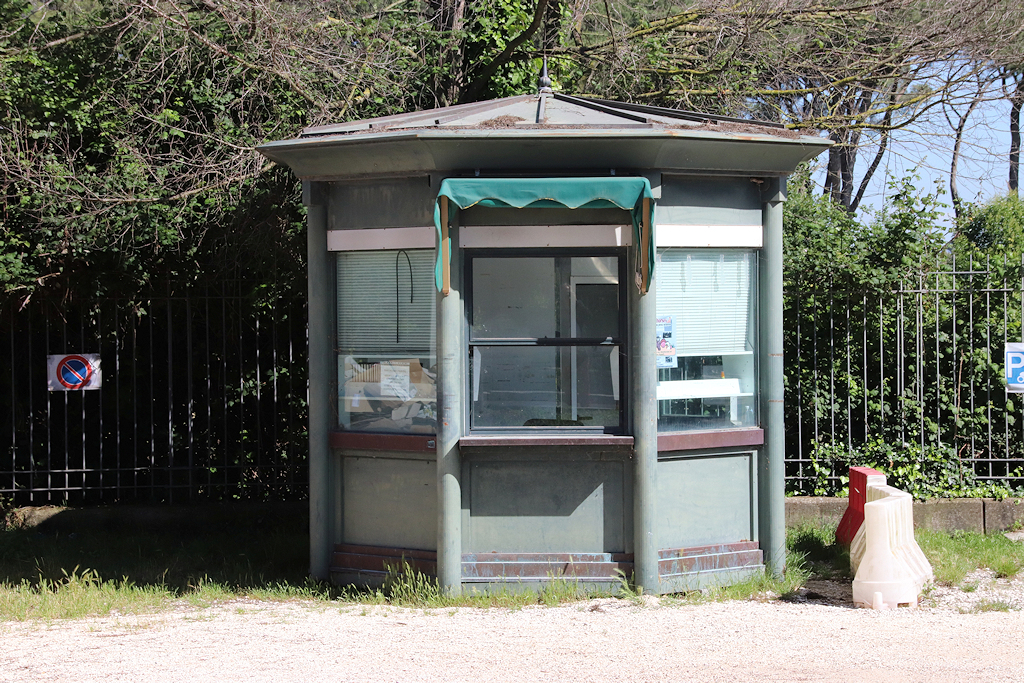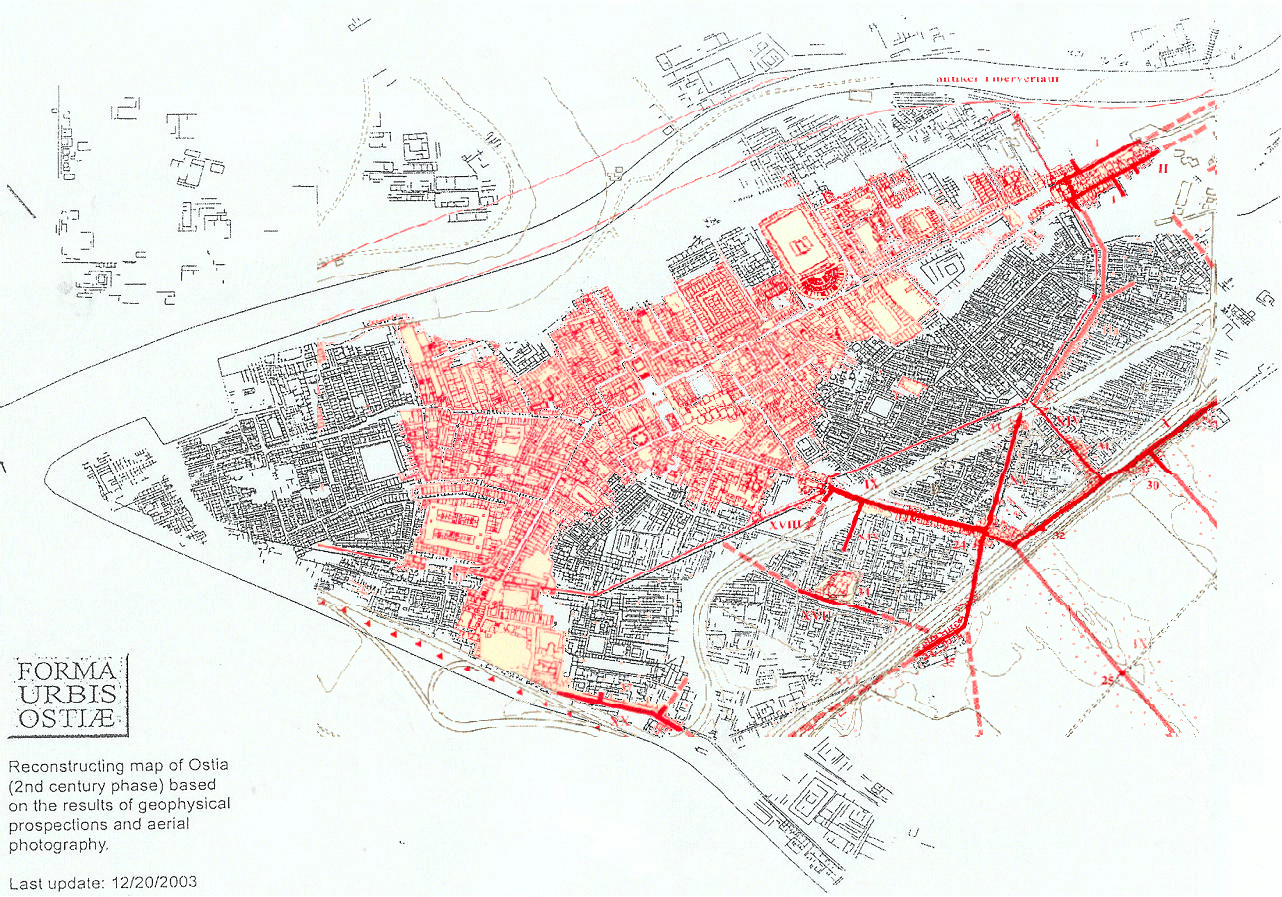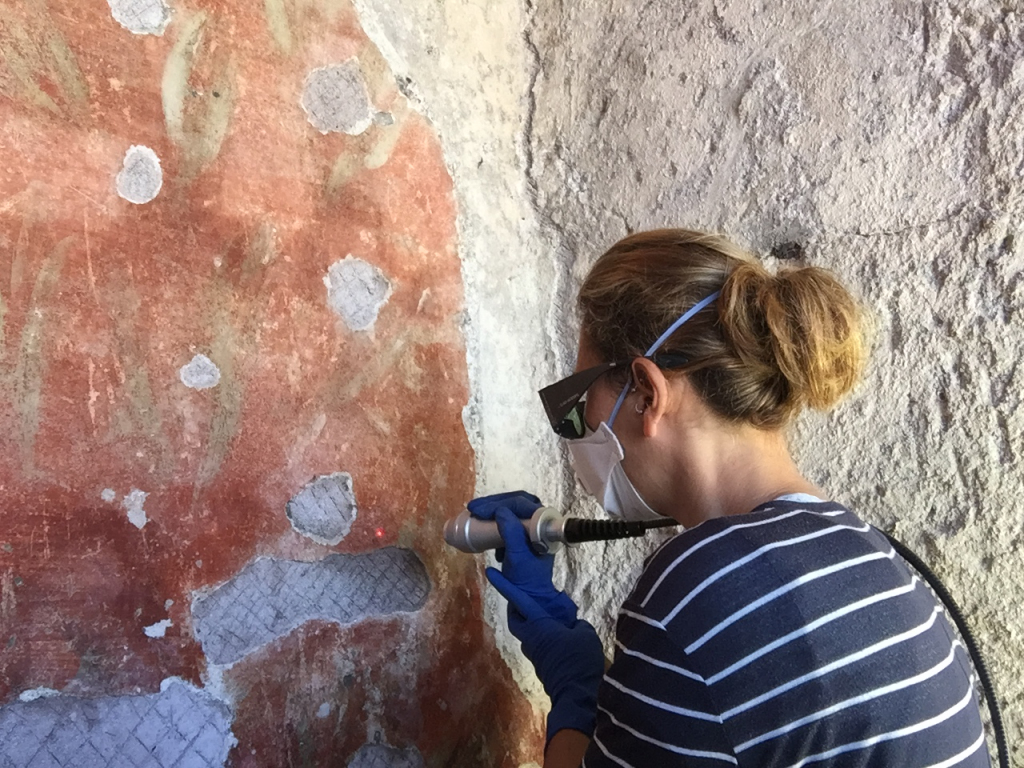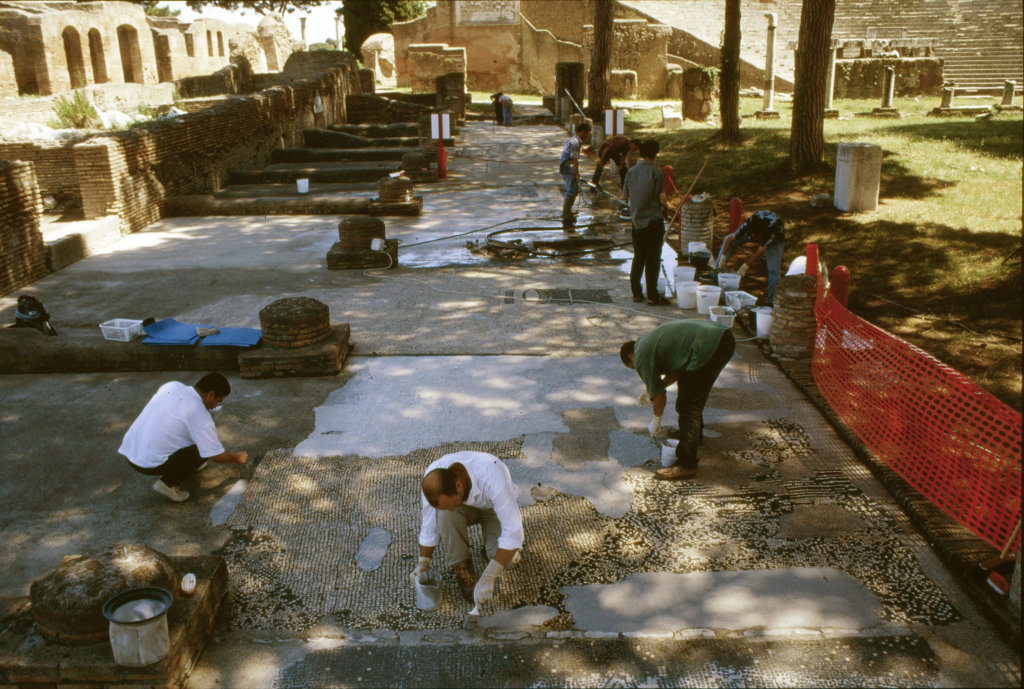FROM THE SECOND WORLD WAR UNTIL THE PRESENT DAY
Guido Calza died in 1946. Shortly before his death he had married Raissa Gurevich, a Russian ballet dancer, the ex-wife of the Italian painter De Chirico. She became an expert in the field of sculpture. Pine-trees and cypresses were planted to make the site more attractive. For the proper drainage of the site the ancient channels below the roads were cleaned. Wooden ceilings were sometimes built to protect the paintings, for example in the House of the Muses (III,IX,22). Many paintings and mosaics were detached, to be placed on modern panels. The panels were then fastened on their original location or taken to store rooms. The Warehouse of Epagathus and Epaphroditus (I,VIII,3), the Small Market with the adjacent Via Tecta (I,VIII,1), and rooms in the podium of the Capitolium were used as such. A second entrance to the excavations was created near the Laurentine Gate. It could be accessed from a panoramic road to the south of the excavations, named after Calza. The ticket office, long in disuse, can still be seen.

Building V,I,1. In the centre is the old, closed ticket office near the Laurentine gate. Photo: Jan Theo Bakker.

Nostalgia. The old ticket office near the Roman Gate. Photo: Klaus Heese.
From now on the archaeological area fell under the jurisdiction of the Soprintendenza per i Beni Archeologici di Ostia, led by a Soprintendente. Superintendent Anna-Gallina Zevi intensified international cooperation. In this century the site was renamed Parco Archeologico di Ostia Antica, led by a Direttore, in 2024 Alessandro D'Alessio. With limited financial means the Parco maintains a vast area, also outside the fenced-off part. Over the years there were many improvements. The ticket office was modernized. A small bar and bookshop in the shops of the theatre were replaced by a restaurant and bookshop behind the museum. New offices and store rooms were built around the museum. The museum itself was completely reorganized.

Map of the area that falls under the jurisdiction of the Parco Archeologico di Ostia Antica, indicated by a red line.
Blue lines indicate the coastline in 100 AD and 1570 AD. Image: Parco Archeologico di Ostia Antica, GIS-Mondi.
Excavations have continued, but on a small scale, carried out with great precision. At the end of the 20th century and in the first decades of this century extensive geophysical research was carried out in Ostia, Portus, and on the Isola Sacra. Summarizing the flow of publications would necessitate a book in itself.

Plan with the unexcavated part of Ostia, in grey, as seen through geophysical research by Michael Heinzelmann.

Excavation. Photo: Gerard Huissen.

Restoration of paintings. Photo: Parco Archeologico di Ostia Antica.

Restoration of mosaics. Photo: Centro di Conservazione Archeologica.